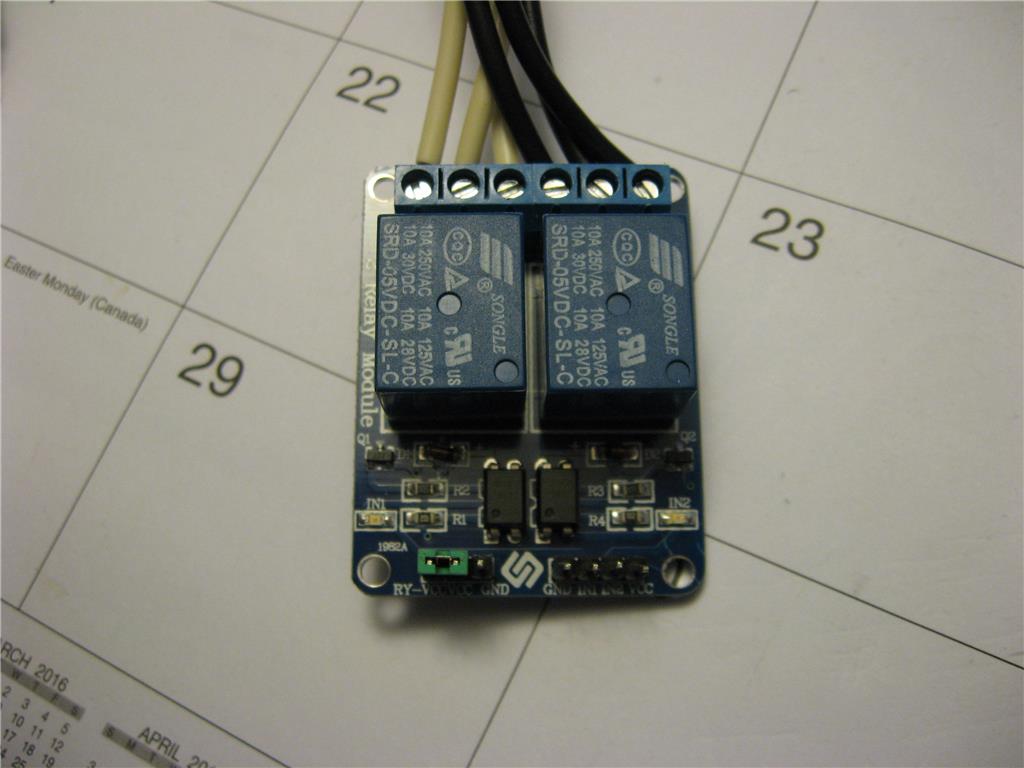Andy Roid
USA
Asked
— Edited
There has been much confusion on how to add a relay to an Ezb. There are three style relays, relay only, relay with a built in transistor circuit, and a relay with an opto-couple circuit. I have the relay with an opto-couple circuit. (817C) ?
This relay requires a 10 K resistor placed in series with the digital output. It is programmed by using a digital output, and "Set Digital". The issue is when the signal sent is "On" the relay is turned off. When the signal is sent "Off" the relay turns on.
This operation needs to be accounted for in your design so relay do not come on during a start up.


Hi Jeremie,
I have gotten the relay working as discussed. I have an issue where the indicator on the relay board stays on. It is bright when the relay is energized and dim when the relay is de-energized. I checked the voltages on the relay board side of the resistor. When Set Digital is Off, the voltage is 3.3 volts (relay on). When Set Digital is On, the voltage is 4.66 (relay off). The relay does operate correctly. If I add a diode will that fix my problem? I ask first because I do not want any "magic smoke.
@ptp Have you used this style relay? How did you wire it ?
I hope Jeremie can respond when he finishes with @Tech.
Thanks, Ron
@Andy,
They are very similar same optocoupler, same relay, mine has some dip switches to change from low/high logic control.
do you know the meaning of the green switch (bottom left) ?
otherwise can you post a link to the schematic/ebay link to check if there are more details ?
The pins are marked RY_vcc vcc gnd and the jumper currently connects the two vcc together. The relay board I have on my desk has a drop of hot glue on the back which I can't remove, otherwise I could tell you where the jumped wires go. I will return later and see if I can find another one. I also will go on ebay to see if I can find more data. I don't believe there was a data sheet, just a description.
Andy,
I got it, the green jumper is similar to mine !
but mine is only two pins basically you put the cap or not.
in yours the third pin "GND" got me confused, but is disconnected it's only a visual information.
Only to be clear mine besides the optical isolator, plus the VCC selection pin also has the possibility to drive the relay with inverted logic (0->ON / VCC-OFF)
based on info i got from my relay i'll create another post explaining how to wire yours.
Found another relay board I had with 817C optocoupler control.
I followed the traces on this board and I believe that the Jumper provides VCC to the collector side of the optocouplers in order to activate the transistors, which in turn activates the relays.
Please note: Although the 5V regulator in this example can provide regulated voltage to a number of relays I don't suggest powering more than 4. It's going to get really hot if you have more than 4 relays on at a time.
Andy,
I found a relay similar to yours and i tested, and it worked.
VCC <--- 5v Power Supply GND <-- 0v Power Supply <--- EZB GND IN1 <- EZB PIN
but... you wrote:
where you got that idea ?
I went to test and i add 10K resistor, the pcb led stays dimmed like you have mentioned.
If you are using the 10K resistor remove it.
Hi @ptp, I just got back. Thanks for doing the testing. Your assumptions about the jumpers look correct. What you explained seems to be the way it looks. Maybe the gnd is just a spare point. I will set up the board and test without the resistor.